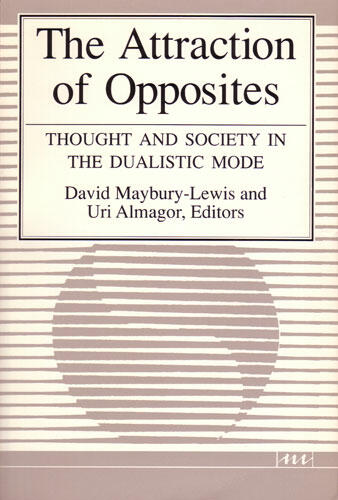The Attraction of Opposites
Thought and Society in the Dualistic Mode
Hardcover : 9780472100941, 384 pages, diagrams, 6 x 9, August 1989
See expanded detail +
Look Inside
Contents
Introduction
The Quest for Harmony by David Maybury-Lewis 1
Dual Organizations by Uri Almagor 19
1. Category and Complement: Binary Ideologies and the Organization of Dualism in Eastern Indonesia by James J. Fox 33
2. Ritual and Inequality in Guji Dual Organization by John Hinnant 57
3. The Complexity of Dual Organization in Aboriginal Australia by Kenneth Maddock 77
4. Social Theory and Social Practice: Binary Systems in Central Brazil by David Maybury-Lewis 97
5. Reciprocal Centers: The Siwa-Lima System in the Central Moluccas by Valerio Valeri 117
6. The Dialectic of Generation Moieties in an East African Society by Uri Almagor 143
7. Language and Conceptial Dualism: Sacred and Secular Concepts in Australian Aboriginal Cosmology and Myth by Aram A. Yengoyan 171
8. Dualism: Fuzzy Thinking or Fuzzy Sets by Anthony Seeger 191
9. Dual Organization and Its Developmental Potential in Two Contrasting Environments by Abraham Rosman and Paula G. Rubel 209
10. Historical Dimensions of Dual Organizations: The Generation-Class System of the Jie and the Turkana by John Lamphear 235
11. The Moieties of Cuzco by R. Tom Zuidema 255
12. The Organization of Action, Identity, and Experience in Arapesh Dualism by Donald Tuzin 277
13. The Maasai Double-Helix and the Theory of Dilemmas by Paul Spencer 297
14. Obligations to the Source: Complementarity and Hierarchy in an Eastern Indonesian Society by Elizabeth G. Traube 321
Epilogue
Dual Organizations and Sociological Theory by Shmuel N. Eisenstadt 345
Contributors 355
Index 359
Description
Explores why societies throughout the world organize social thought and institutions in patterns of opposites

